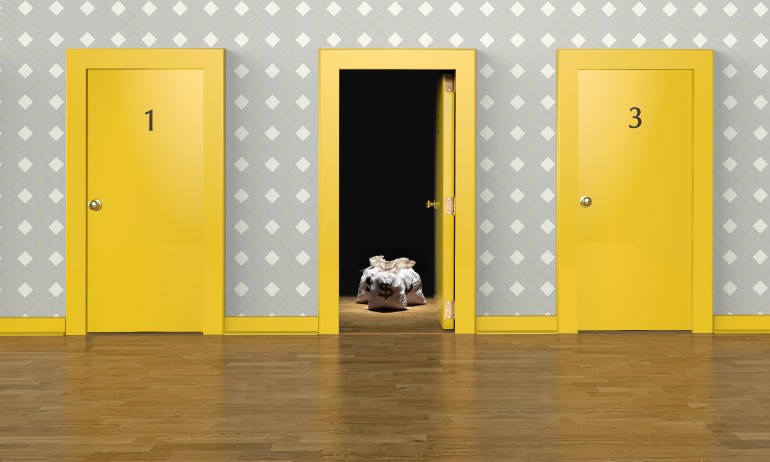“Oh! It’s the Monty Hall Problem!”: Survivor and Game Theory

SPOILER ALERT! If you haven’t watched Season 41 of Survivor or haven’t watched Episode 11 and don’t want to be spoiled, skip this article. Otherwise, please read on.
The reality show Survivor has been a phenomenon since it premiered in 2000. For 35 days (26 days in the most recent season), contestants compete to be the last person standing and win one million dollars. Survivor is about relationship building, physical endurance and strategy in the form of game theory played out on our screens.
Season 41 introduced many new twists and new game theory conundrums. As always, backwards induction is the chief game theory concept of Survivor. Every player is reasoning backwards from the desired outcome of winning the million dollars to figure out the steps they must make to get there. Actuarial students should be familiar with this concept from planning an exam study schedule to pass an exam.
Prisoner’s dilemma was featured heavily during this season, especially in the first few episodes when select players have to make a choice, risking or protecting their vote depending on the choice the other players make. It’s taken various forms on Survivor, though this was a new iteration.
Episode 11 of season 41 also introduced a new twist, “Do or Die.” The first person eliminated from the immunity challenge, Deshawn Radden, had to choose one of three boxes, only one of which would guarantee him safety and immunity from votes at Tribal Council. The other two boxes would send him home without a vote and end his Survivor journey. “Monty Hall problem!” Xander whispered when Jeff offered to let Deshawn switch boxes, which made me smile with delight then frown in horror as Deshawn made the incorrect choice and kept his box. Luckily for Deshawn and in defiance of the odds, he made the right decision to keep the box, as it was revealed to contain a fire symbol indicating he was safe and immune from the vote at Tribal Council.
The “Monty Hall” problem was named after Monty Hall, the original host of the television game show Let’s Make a Deal. The premise is simple: There are three blind options and the contestant chooses one. The host reveals one of the two not chosen and asks the contestant whether they want to switch their choice. It is important to know that the host will not reveal the winning box to keep the game interesting, so you know the winning box is either the chosen box or the one unrevealed. Most people believe your odds increase to 50% when one of the boxes is taken away. Therefore, most people believe you should stick with the original guess. However, statistically, your odds of winning the desired prize are better if you switch. It is a real-life example of Bayes theorem.
In reality, there are nine different outcomes to the Monty Hall problem as follows:
| Your Box | Safe Box | Host Box | Don't Switch | Switch |
|---|---|---|---|---|
| 1 | 1 | 2 or 3 | Safe | Eliminated |
| 1 | 2 | 3 | Eliminated | Safe |
| 1 | 3 | 2 | Eliminated | Safe |
| 2 | 1 | 3 | Eliminated | Safe |
| 2 | 2 | 1 or 3 | Safe | Eliminated |
| 2 | 3 | 1 | Eliminated | Safe |
| 3 | 1 | 2 | Eliminated | Safe |
| 3 | 2 | 1 | Eliminated | Safe |
| 3 | 3 | 1 or 2 | Safe | Eliminated |
| Probability of Safety | 3/9 (33%) | 6/9 (67%) | ||
As you can see, if you don’t switch boxes, the probability of being safe is the same as the probability of being safe when you choose boxes originally, 1 in 3 or 33%. Switching boxes doubles your chance of winning, which is a counter-intuitive solution.
There are many other examples of probability and statistics in Survivor that actuarial students may recognize. Please share with us if you have another Survivor game theory puzzle that you would like to see in a future issue of Future Fellows.

